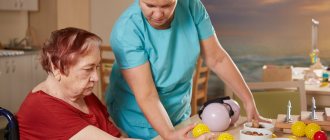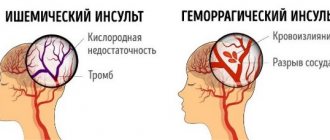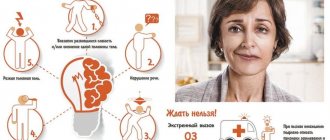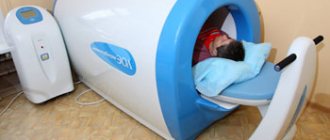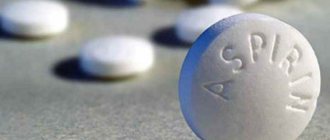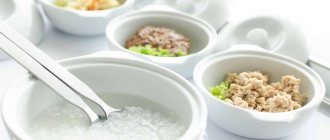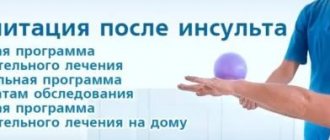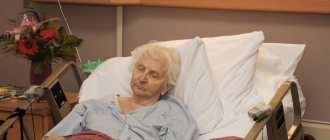Statistics show that out of every 100 thousand people living in Ukraine, 300 people have suffered a stroke. Every year this number only increases. This is facilitated by poor environment, poor nutrition, lack of exercise, bad habits and chronic stress. In addition, many people ignore preventive visits to the doctor until the last minute.
If a stroke has already occurred, there is no need to give up and hire a nurse. Medicine has advanced significantly in recent years, and there are effective methods of recovery. By following the recommendations of your doctor, you will help your loved ones return to normal activities faster.
Ideally, perform exercises after a stroke under the supervision of an experienced specialist. This service is offered by the private boarding house Life House.
A video will help you learn physical exercises after a stroke at home. Review them as many times as necessary, keeping track of all the details and nuances.
Position and styling
What exercises to do after a stroke depends on the characteristics of the disease in a particular case and the patient’s medical history. Life-House offers general recommendations.
Despite the fact that the patient spends the first time in bed, this is not a reason to waste time. It can be used usefully, because it is useful to do exercise therapy after a stroke while lying down. The main task is to relax the muscles in good shape and stimulate those that are relaxed.
Rehabilitation after a stroke at home requires some effort and knowledge. It is important to start with the patient's position. Place it so that the painful side is on the approach side. If he wants to take something from the nightstand next to the bed, he will need to turn on his sore side. This creates an additional stimulus for the muscles, which means they begin to work better.
To turn around, you need to grab the sick one with your healthy hand and lay it on your stomach. This way he can control it, and when turning, he will provide himself with support on his elbow.
Positional treatment is carried out using pillows. When placing them under the knee joint, ensure that the thigh is level and the foot does not fall outward. The leg needs to be supported - a chair or headboard will do.
Basic Concepts
Movement is carried out by skeletal muscles, which consist of fibers that have the properties of excitability and contractility. Excitation (like contraction) occurs under the influence of nerve impulses from the central nervous system. The participation of muscles in movement can be different, depending on the place of attachment to the bones of the skeleton, on the structure of the joints, muscles can produce different movements.
The approach of one part of the body to another (for example, the forearm to the shoulder, the palmar surface of the hand to the forearm, the fingers to the palm, the shin to the thigh, the plantar surface of the foot to the shin) is called flexion. Therefore, the muscles that produce this movement are called flexors. It should be noted that quite often muscles are named not by their main functional properties, but by their place of attachment or location. Sometimes the names of muscles reflect their shape or composition.
For example, the main flexor of the forearm is the biceps brachii muscle. The muscles that flex the hand and fingers are called flexors, respectively, of the hand and fingers. Flexion of the lower leg is carried out by three muscles at once: the biceps femoris, semitendinosus and semimembranosus muscles, which make up the posterior group of femoral muscles. Plantar flexion of the foot is performed by the triceps surae muscle.
The opposite movement to flexion is extension (for example, arms at the elbow, legs at the knee). The muscles that perform this movement are called extensors. The hand and fingers are extended by the extensors of the hand and fingers, respectively.
The main extensor of the forearm is the triceps brachii muscle. The leg at the knee is extended by the powerful quadriceps femoris muscle, and the dorsiflexion of the foot is done by the tibialis anterior and peroneus longus muscles (named after the shin bones along which they are located).
In addition to flexion and extension, there are other types of movements. So, when a part of the body moves away or approaches in relation to its midline, they speak of abduction or adduction. For example, abduction of the arm to the side, adduction of the arm to the body, abduction (dilation) and adduction of the hips. The muscles involved in these movements are abductors or adductors, respectively. So, the pectoralis major and latissimus dorsi muscles bring the arm to the body, and the deltoid muscle abducts it. Adduction of the hip is carried out mainly by the adductor longus muscle, and abduction by the gluteus minimus muscle.
This phenomenon should also be taken into account. As mentioned, the flexion of the forearm towards the shoulder is carried out mainly by the biceps brachii muscle. But the brachioradialis muscle is also involved in flexing the forearm. When bending the forearm to the shoulder, these muscles act as synergists (producing the same movement). The same muscles that produce oppositely directed movements (for example, one is flexion and the other is extension) are called antagonists. And the triceps brachii muscle, which extends the forearm (from the shoulder), is an antagonist of the biceps muscle. Working as antagonists, muscles can in many cases act as synergists in another movement.
Muscles perform two types of work: dynamic (moving the body in space or parts of the body relative to each other) and static (providing a certain position of the body in opposition to external forces seeking to change this position). At the same time, long-term, tireless muscle tension, called tone, provides resistance to gravity and maintains a certain body position in space (for example, standing or sitting).
Meanwhile, movement is not reduced to a simple contraction of individual muscle fibers or even muscle groups. From the moment of birth, their improvement and development occurs: from the chaotic movements of a newborn to the highly differentiated movements of an adult. In parallel and in conjunction with this, the structures and functions of the cerebral cortex as a whole are being improved.
It is important that the muscles not only perform movements, but also have unique sensory functions. The presence of a particularly sensitive apparatus in the muscular system allows the central nervous system to constantly monitor the correctness and accuracy of movements, and, on the other hand, regulate the state of muscle tone.
The performance of any movement is accompanied by a flow of impulses entering the cerebral cortex not only from sensitive muscle receptors, but also from other receptors, signaling the need to change the movement if it does not produce the desired results. However, information from sensory muscle receptors plays a major role in the regulation, coordination and control of movements.
With a stroke, damage most often occurs to the overlying spinal cord (supraspinal) segment of the motor pathway, which leads to the development of central paralysis or paresis. Impaired movement of the limbs is observed, as a rule, on one side of the body (hemiparesis or hemiplegia). A characteristic sign of central paralysis, in addition to the absence or limitation of movement, is increased muscle tone (spasticity) and increased tendon reflexes.
The tone is not increased in all muscles, but only in certain ones (usually the so-called anti-gravity muscles). These are the postnotonic muscles, which ensure the vertical position of the body, the pectoralis major, the biceps brachii, the flexors of the hand and fingers, the long adductor femoris, the quadriceps femoris and the triceps surae muscle. The tone of the antagonists of these muscles (deltoid, triceps brachii, extensors of the hand and fingers, posterior femoral group, tibialis anterior and peroneus longus) is usually not increased, but paresis is much more pronounced.
One of the main goals of rehabilitation treatment of patients with movement disorders due to central paresis is to reduce the excessive flow of nerve impulses from spastic muscles and to increase sensory signals from their antagonists.
For this purpose, from the very first days after a stroke and during the entire time the patient is in bed, it is recommended to use a special positioning of paretic limbs, which is called “positional treatment.”
Passive arm development
Exercise therapy after a stroke at home should not be limited to purchasing an expander. Start with the larger muscles, moving from the shoulder joint to the finger joint.
Take the patient's hand so that his thumb remains in your palm and his hand rests relaxed on yours. To prevent your elbow from sagging, support it with your other. Lean on your leg in a lunge to transfer the weight of your body. Do 10-15 repetitions, softly and smoothly.
By mentally making up and down movements with your eyes closed, the patient can become involved in developing muscles. When doing exercise therapy after a stroke, the video will help you understand all the possible options.
Active gymnastics
Passive movements and massage are preparatory measures before active gymnastics, which plays an important role in developing isolated movements in paretic limbs.
Active gymnastics begins with exercises for healthy limbs, alternating them with gymnastics for paretic ones, as well as breathing exercises. The load on the cardiovascular and respiratory systems should increase gradually, otherwise the patient may become overfatigued. It is recommended to monitor the pulse after each exercise performed 1-5 times. Exercises should be separated by rest breaks lasting 1-2 minutes.
Active gymnastics begins with exercises in isometric mode. Isometric muscle contraction is a contraction without shortening, that is, without movement in the joints. When performing exercises in this mode, it is often necessary to provide assistance to the patient.
To achieve isometric contraction of the extensors of the hand and fingers, the patient is placed on his back, the arm is bent at the elbow and the forearm is placed in a vertical position. Then you should extend (straighten) the hand and fingers (so that they are 180 degrees with the forearm). Holding the paretic arm by the forearm, the patient is asked to keep the hand and fingers in this extended position. In the same starting position, but holding the paretic arm by the hand, the patient is asked to hold the forearm in a given vertical position.
This exercise is aimed at training the forearm flexors in an isometric manner. To train the forearm extensors, the patient’s paretic arm is extended at the elbow and raised vertically upward. When fixing the patient's shoulder, they are asked to hold the arm in a raised position. To do this, he must tense the extensors of the forearm.
Isometric contraction of the abductor muscles of the shoulder is carried out with the patient positioned on the healthy side. The paretic arm is raised up and bent at the elbow at an angle of 90 degrees. While supporting the forearm, ask the patient to hold his hand in this position.
The hip flexors are trained isometrically with the patient in the supine position. The paretic leg is bent at the knee, lightly holding it by the shin. And the patient is asked to hold the leg in this position, not allowing it to straighten at the knee. In the same starting position, you can train the hip abductors. Slightly moving the leg bent at the knee to the side, ask the patient to hold it in a fixed position.
These exercises make up the initial complex of active gymnastics. In the first days of classes, they should be performed 2-3 times, gradually increasing the number of exercises to 5-10 times.
When patients begin to develop independent isolated movements, they begin to train them. For this purpose, light exercises are used, the purpose of which is to eliminate the unwanted influence of gravity. “It is best to carry them out using various suspensions, hammocks and blocks.
Lightweight exercises should not cause pain. They are performed at a slow pace, in a volume accessible to the patient. First of all, exercises are carried out for muscles whose tone usually does not increase. So, for example, supporting a paretic arm with a hammock, the patient is asked to perform those active movements that he has already developed.
This includes abduction and adduction of the shoulder, flexion and extension of the forearm, and extension of the hand. Facilitated abduction and adduction of the hip is trained with the patient in the supine position. And by turning the patient onto the healthy side and supporting the affected leg, they train the extension and flexion of the lower leg.
As the range of active movements increases over time, you should add exercises with light, measured resistance. It works like this; for example, when actively extending the lower leg, you should try to slightly impede this movement by pressing on top of the lower leg and not allowing the leg to extend at the knee. Exercises with light resistance are carried out similarly for the remaining muscle groups.
It must be remembered that resistance exercises are included in the complex of active gymnastics only when active isolated movements appear in a sufficiently large volume.
These exercises are recommended mainly for muscles in which the tone does not increase. The person performing them needs to pay special attention to breathing. The patient should not delay him. Resistance exercises should be combined with passive relaxation exercises.
Exercises while sitting
After a stroke, rehabilitation at home, exercises should be performed in different positions to vary the load. It is important to include the muscles of the sore side in the work. Their relaxation will lead to delayed rehabilitation and even injury. It is better if they are insured by a healthy person rather than by pillows and other devices.
When the patient is already sitting upright, specifically rock him. This way the body will get used to the load. We gradually complicate the task. Such gymnastics after a stroke will help a person move on to more complex exercises as soon as possible.
The influence of exercise therapy on the patient’s nervous system
Therapeutic exercise is the performance of certain physical exercises, which begin with the simplest movements of the patient after he regains consciousness, then the physical activity gradually increases, the exercises become more complex. Exercise therapy helps improve blood circulation in organs and tissues, accelerates the process of restoration of various body functions, and improves metabolism. Physical therapy exercises for each patient are selected individually depending on the severity of the patient’s condition and concomitant diseases. An individual physical therapy program at the Yusupov Hospital is drawn up by a rehabilitation doctor.
Make an appointment
Walking with a cane
Buy a good, comfortable cane that fits your height with a comfortable handle.
Rehabilitation after a stroke physical therapy includes training in walking patterns. First, the stick is rearranged, after which a step is taken with the injured leg. And only then does the healthy one walk. Make sure there are always two points of support.
The affected leg usually turns outward. To correct this, ask the patient to place emphasis on the knee, bending it slightly. Healthy people do this without even thinking. When rehabilitating after a stroke at home, exercises involve learning this process almost from scratch.
Restoring speech after a stroke
Speech function after a stroke is restored much worse than motor function. Its recovery can take a long time, over several years. Speech therapists at the Yusupov Hospital are developing a program and working with the patient to restore speech throughout the entire period of his stay in the hospital; after discharge from the hospital, his relatives are involved in the patient’s rehabilitation. To restore speech, the following techniques are used:
- Pronunciation of an incomplete word - the patient must complete the word independently.
- If speech function is completely lost, rehabilitation begins with the pronunciation of individual sounds.
- When the patient learns to pronounce words, he is forced to repeat short poems and sayings.
- Singing is considered one of the best methods of speech restoration.
- In order for the patient to learn to speak faster, the facial muscles and tongue muscles should be trained. For this purpose, the patient is taught to curl his lips into a tube, stick his tongue out of his mouth as far as possible, and lick his lips with his tongue, first in one direction, then in the other. Lightly bite your lower lip, then your upper lip, and bare your teeth.
Make an appointment
Learning to walk up the stairs
During exercise therapy after a stroke, the set of exercises ends with the patient attempting to walk, climb and descend stairs independently. Learning this is dangerous, but necessary.
The patient needs to stand near the stairs as close as possible. If the railing is on the side of the affected arm, give him a stick. Having placed it on the step, you need to move the healthy leg and pull the sore leg towards it. The sore leg goes down first; to do this you need to sit down on the strong, healthy leg.
Obviously, although it is possible to recover without additional help, it will require a huge investment of time and effort. Errors affect the speed and quality of rehabilitation. Proper exercise after a stroke is the key to a speedy recovery. Therefore, it is better to shift this task onto the shoulders of professionals - people with specialized education and extensive experience. Life House specialists will tell you which exercises after a stroke are most effective and injury-free. They will help your loved one get back on their feet and enjoy life to the fullest!
Restoring fine motor skills after stroke
Fine motor skills are restored with the help of simple exercises that allow you to restore fine hand movements and finger flexibility. The most effective activities for restoring fine motor skills are putting together puzzles, various objects from small parts of a construction set, drawing, fastening buttons on clothes, and lacing shoes. To restore the function of the hand and fingers, the patient is asked to take two nuts in his hand and roll them with the movement of the palm and fingers. Recommended for patients after a stroke to develop fine motor skills:
- Sort through the beans and peas, separating the peas from the beans.
- Use special silicone hand trainers with spikes to massage your palms and fingers.
- Tighten and unscrew nuts, close and open the lock with a key, turn on and off the lights in the room, write texts.
What needs to be done at home?
If the recovery process is not started in a timely manner, the patient experiences complete or partial paralysis, disturbances in the functioning of the speech apparatus, loss of memory, hearing and decreased vision. The most severe consequences of a stroke are coma and swelling of the brain.
Before restoring the right or left side after a stroke, the victim’s relatives and friends must ensure:
- Comfort. The rehabilitation process at home requires a positive atmosphere and a comfortable environment. Relatives need to create a well-ventilated and lit room. You should also install a bed with a special mattress, which will reduce the likelihood of bedsores. The pillow should provide good support for the head, made of loose material.
- Nutrition. Cooked food should be moderately warm and tasty. It is recommended to divide food into 4-5 meals, the last of which is served no later than 2 hours before bedtime. Dishes are prepared without the use of salt, baked or boiled. To clarify dietary standards, you should consult your doctor.
- Hygiene. The main problem that slows down the rehabilitation process is bedsores, which appear due to pressure from hard chairs, beds, or improper turns and movements. To avoid this, it is necessary to carry out timely body hygiene and care for the patient every day. The victim's skin should be kept clean, without excessive moisture or dryness.
You should also arrange household items in such a way that a person who has had a stroke can reach them without lifting their torso on their toes. It is recommended to cover the table with a slightly damp towel to prevent the dishes from slipping. The handles of utensils such as razors, combs, spoons, etc. should be covered with foam padding.
